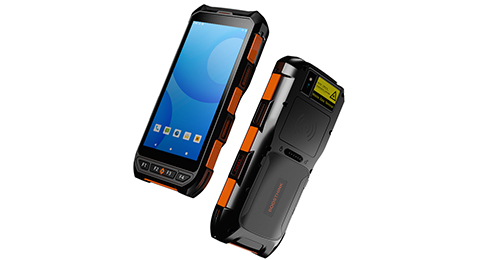400-9920-618
At present, due to the fact that many Distributor or other imitation manufacturers in the market use substandard charging and cross-regional transfer of goods through OEM, and the barcode itself is difficult to fundamentally prevent counterfeiting, it is also prone to a series of factors such as cross-selling. This seriously affects the reputation and after-sales service of the company. In this case, RFID anti-counterfeiting management can help enterprises to achieve strict supervision and control in the distribution network, improve the enterprise's channel management level and after-sales service efficiency, and reduce and avoid channel risks.
System introduction
The RFID anti-counterfeiting & anti-collision goods system mainly adopts RFID technology, pastes an RFID electronic label on each product, collects data through RFID data collector , and transmits the collected data to the database of the background monitoring cente r. In the monitoring center database, the anti-counterfeiting and anti-collision goods management software developed for the enterprise is installed (or this part of the function is combined with the enterprise website and embedded into the webpage, which is convenient for dealers and end users to query), and the software reads the detailed information of the goods. The enterprise affixes a unique RFID tag on each product, which contains the product name and specification information, production information, serial number, sales information, etc. In particular, the RFID electronic tag can record the sales area and sales responsibility of the product in more detail. such as key accessory serial numbers, etc., thus adding a unique, complete, and confidential identity and attribute identifier to the item. In addition, the use of ultra-high frequency acquisition equipment can read product ID numbers in large batches at one time, which greatly reduces the time for collecting product information and improves the efficiency of enterprise production, warehouse, and transportation management.
r. In the monitoring center database, the anti-counterfeiting and anti-collision goods management software developed for the enterprise is installed (or this part of the function is combined with the enterprise website and embedded into the webpage, which is convenient for dealers and end users to query), and the software reads the detailed information of the goods. The enterprise affixes a unique RFID tag on each product, which contains the product name and specification information, production information, serial number, sales information, etc. In particular, the RFID electronic tag can record the sales area and sales responsibility of the product in more detail. such as key accessory serial numbers, etc., thus adding a unique, complete, and confidential identity and attribute identifier to the item. In addition, the use of ultra-high frequency acquisition equipment can read product ID numbers in large batches at one time, which greatly reduces the time for collecting product information and improves the efficiency of enterprise production, warehouse, and transportation management.
System function
1) Anti-smuggling inquiry: According to the different price strategies of enterprises in different markets, in order to prevent smuggling, enterprises can set up market divisions when writing labels. Once the local distributor finds out that there are other distributors selling in the area , it is easy to find out which channel the product is sold through by holding it;
2) Sales management: By combining RFID technology with invoicing software and enterprise wide area network, distribution enterprises can achieve comprehensive, effective and safe management and monitoring of the entire process of commodity distribution. And further obtain valuable commodity warehousing, logistics, sales, payment and other data, and provide valuable statistical information, data and reports for the business decision-making of the corporate headquarters.
3) Commodity anti-counterfeiting: The system first realizes the anti-counterfeiting function of the RFID address code. The address code is globally unique and cannot be copied. The logistics of each label is recorded in the database. Forged barcodes have no database records, and are easily checked and processed by the system and automatically alarmed.
4) User inquiry: Through mobile phones or web pages, consumers can inquire about the product purchased by the user on which date it was produced, and which channel was purchased through; there is no need to inquire about relevant documents.
5) After-sales service: The after-sales service department scans the RFID electronic label to obtain the information such as the origin and characteristics of the product stored in the label, and then conducts comprehensive and strict identification and recognition of the repaired products to ensure that the company's interests are not harmed, and Effectively improve the quality of customer service.